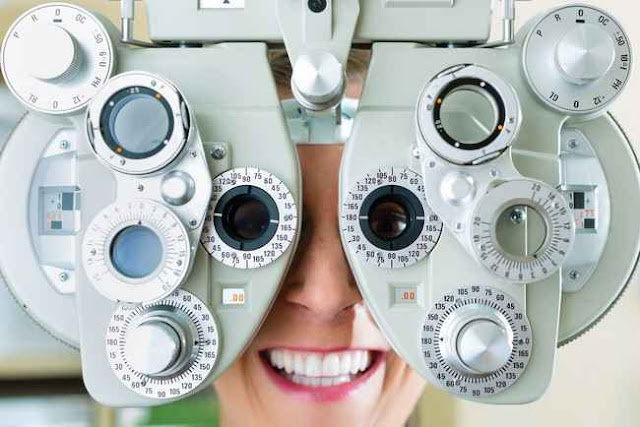Understanding Congenital Abnormalities and their Causes
Congenital abnormalities or congenital abnormalities are disorders that are acquired from birth. This condition is caused by disorders during the developing fetus in the womb. Congenital abnormalities can cause a baby to be born with a disability or malfunction in certain organs or body parts.
Data from WHO shows that there are more than 8 million babies worldwide born with congenital abnormalities each year. Of the many babies born with congenital or congenital abnormalities, about 300,000 babies die in just a few days to 4 weeks after birth.
In Indonesia alone, there are an estimated 295,000 cases of congenital abnormalities per year and this figure accounts for around 7% of infant mortality.
Some babies born with congenital abnormalities can live. However, these babies are generally at high risk for experiencing health problems or disabilities in certain organs or body parts, such as feet, hands, heart, to the brain.
Congenital abnormalities can occur in every phase of pregnancy. However, the majority of cases of congenital abnormalities occur in the first trimester of pregnancy, that is, when the organs of the fetus are just beginning to form. This disorder can be detected during pregnancy, when the baby is born, or during the child's growth and development.
Several Factors Causing Congenital Abnormalities
There are several factors that can cause a baby to be born with a congenital disorder, namely:Genetic factors
Every genetic trait that determines the shape and function of the body's organs is carried by chromosomes. Chromosomes are components of genetic material carriers that are passed on from parent to child. There are 23 normal pairs of human chromosomes. Each pair of chromosomes comes from the mother's egg and father's sperm that meet during the fertilization process. When there are chromosomal abnormalities or genetic disorders, for example in children born without 46 chromosomes or actually born with excess chromosomes, then he can experience congenital abnormalities. This genetic disorder can be hereditary or occur due to mutations or changes in genetic traits in the fetus when it is conceived.Environmental factor
Exposure to radiation or certain chemicals in pregnant women, such as in pesticides, drugs, alcohol, cigarette smoke, and mercury, can increase the risk of babies experiencing congenital abnormalities. This is because the toxic effects of these substances can interfere with the process of growth and development of the fetus.Maternal nutritional factors during pregnancy
It is estimated that about 94% of cases of congenital abnormalities found in developing countries occur in babies born to mothers with poor nutrition during pregnancy. Mothers with this condition usually lack the intake of important nutrients that play a role in supporting the formation of fetal organs in the womb. The essential nutrients for pregnant women and fetuses include folic acid, protein, iron, calcium, vitamin A, iodine, and omega-3. In addition to malnutrition, obese mothers during pregnancy also have a high enough risk to deliver babies with congenital abnormalities.Factors in the condition of pregnant women
During pregnancy, there are many conditions or diseases in the mother that can increase the risk of the fetus in the womb to experience congenital abnormalities. Some of these conditions and diseases include:- Infections during pregnancy, such as amniotic fluid infections, syphilis, rubella, or zika virus.
- Anemia during pregnancy.
- Pregnancy complications, such as gestational diabetes and preeclampsia.
- Side effects of drugs consumed during pregnancy.
- Unhealthy habits that are carried out during pregnancy, such as using drugs, consuming alcoholic beverages, and smoking.
- The age of pregnant women who are quite old when pregnant. Some studies state that the older the mother is during pregnancy, the higher the risk of birth defects in the baby she is carrying.
Congenital Abnormalities That Occur Many in Infants
Congenital abnormalities or congenital abnormalities in infants can be grouped into two, namely:Physical abnormalities
Abnormalities or physical defects in the baby's body that are often encountered are:-
Cleft lip (cleft lip and palate).
- Congenital heart disease.
- Neural tube defects, such as spina bifida and anencephaly.
- Parts of the body are not normal, such as clubfoot or crooked legs.
- Deformity and location of hip bones (dislocation of the congenital pelvis).
- Gastrointestinal abnormalities, such as Hirschsprung's disease, gastrointestinal fistula and anal atresia.
Functional disorders
Functional disorders are birth defects associated with disorders of the body's organs and systems. Some types of abnormalities or functional defects that often occur are:- Impaired brain and nerve function, such as Down Syndrome.
- Metabolic disorders, such as hypothyroidism and phenylketonuria.
- Disorders of the body's senses, such as deafness and blindness (for example due to congenital cataracts).
- Muscle abnormalities, such as muscular dystrophy.
- Abnormalities in the blood, such as hemophilia, thalassemia, and sickle cell anemia.
Early Detection and Management of Congenital Abnormalities
Congenital abnormalities can be detected since the fetus is still in the womb. To detect whether there are congenital abnormalities in the fetus, the doctor can perform an ultrasound examination of the uterus, fetal blood tests, genetic tests, and amniocentesis or amniotic fluid sampling. However, sometimes congenital abnormalities are only detected when the baby is born or after he was a child, even after adulthood. Congenital anomalies are usually not detected because the mother rarely or absolutely does not do a womb during pregnancy. After being diagnosed with a congenital abnormality, the baby or child needs to be treated, such as administering drugs, physiotherapy, the use of assistive devices, to surgery to repair the defective parts or organs of the body. The type of treatment will be chosen according to the type of abnormality that occurs. In many cases, congenital abnormalities cannot be prevented, especially those that are hereditary. However, there are several efforts to reduce the risk of these conditions, including:- Eating a balanced nutritious food.
- Carry out immunizations according to doctor's recommendations.
- Stop smoking or inhaling cigarette smoke.
- Limit consumption of alcoholic drinks.
- Doing exercise regularly.
- Get enough sleep and avoid excessive stress during pregnancy.



Comments
Post a Comment